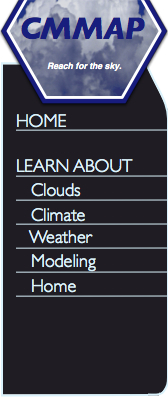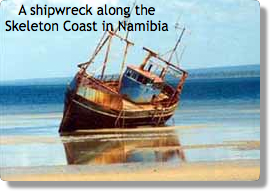
|

|


How do oceans affect climate
Ocean circulation
Eastern boundary currents
The water that is transported poleward must return to the Tropics somehow, or else the high latitude oceans would have way too much water! The return flow is through eastern boundary currents, which flow Equator-ward along the eastern edges of the Atlantic and Pacific Oceans. These currents are much slower than their western counterparts, and they are associated with cold ocean water for two reasons.
Why does upwelling occur? The surface winds are pushing water along the coast, but because of the coriolis force there is an overall movement of ocean water away from the coast (water moving from the north to the south is deflected to the right - or the west - in the Northern Hemisphere; and water moving from the south to the north is deflected to the left - or the west - in the Southern Hemisphere). The void left behind allows for the upwelling of cold, nutrient-rich deep water.
 The cold waters along the eastern boundaries of oceans creates cool, stable
atmospheric conditions (remember that cold air is dense and so it will not
rise). In fact, the air above the
boundary layer
in these regions is usually
warmer than the air just above the ocean's surface.
Stratocumulus clouds usually form where the warm and cool air meets, and
they tend to stick around for long periods of time.
The cold waters along the eastern boundaries of oceans creates cool, stable
atmospheric conditions (remember that cold air is dense and so it will not
rise). In fact, the air above the
boundary layer
in these regions is usually
warmer than the air just above the ocean's surface.
Stratocumulus clouds usually form where the warm and cool air meets, and
they tend to stick around for long periods of time.
The cool air can also lead to fog - the western coast of Africa is sometimes called the Skeleton Coast, partly because its beaches are littered with more than 1,000 shipwrecked boats from the rocks and the fog. The name also comes from the whale and seal bones that littered the shore when the whaling industry was still active.
Next page -> ocean circulation, continued
Links and resources
Ocean circulation
Eastern boundary currents
The water that is transported poleward must return to the Tropics somehow, or else the high latitude oceans would have way too much water! The return flow is through eastern boundary currents, which flow Equator-ward along the eastern edges of the Atlantic and Pacific Oceans. These currents are much slower than their western counterparts, and they are associated with cold ocean water for two reasons.
- The water is coming from the frigid polar regions.
- Upwelling occurs along the coast.
Why does upwelling occur? The surface winds are pushing water along the coast, but because of the coriolis force there is an overall movement of ocean water away from the coast (water moving from the north to the south is deflected to the right - or the west - in the Northern Hemisphere; and water moving from the south to the north is deflected to the left - or the west - in the Southern Hemisphere). The void left behind allows for the upwelling of cold, nutrient-rich deep water.
 The cold waters along the eastern boundaries of oceans creates cool, stable
atmospheric conditions (remember that cold air is dense and so it will not
rise). In fact, the air above the
boundary layer
in these regions is usually
warmer than the air just above the ocean's surface.
Stratocumulus clouds usually form where the warm and cool air meets, and
they tend to stick around for long periods of time.
The cold waters along the eastern boundaries of oceans creates cool, stable
atmospheric conditions (remember that cold air is dense and so it will not
rise). In fact, the air above the
boundary layer
in these regions is usually
warmer than the air just above the ocean's surface.
Stratocumulus clouds usually form where the warm and cool air meets, and
they tend to stick around for long periods of time.The cool air can also lead to fog - the western coast of Africa is sometimes called the Skeleton Coast, partly because its beaches are littered with more than 1,000 shipwrecked boats from the rocks and the fog. The name also comes from the whale and seal bones that littered the shore when the whaling industry was still active.
Next page -> ocean circulation, continued
Links and resources
